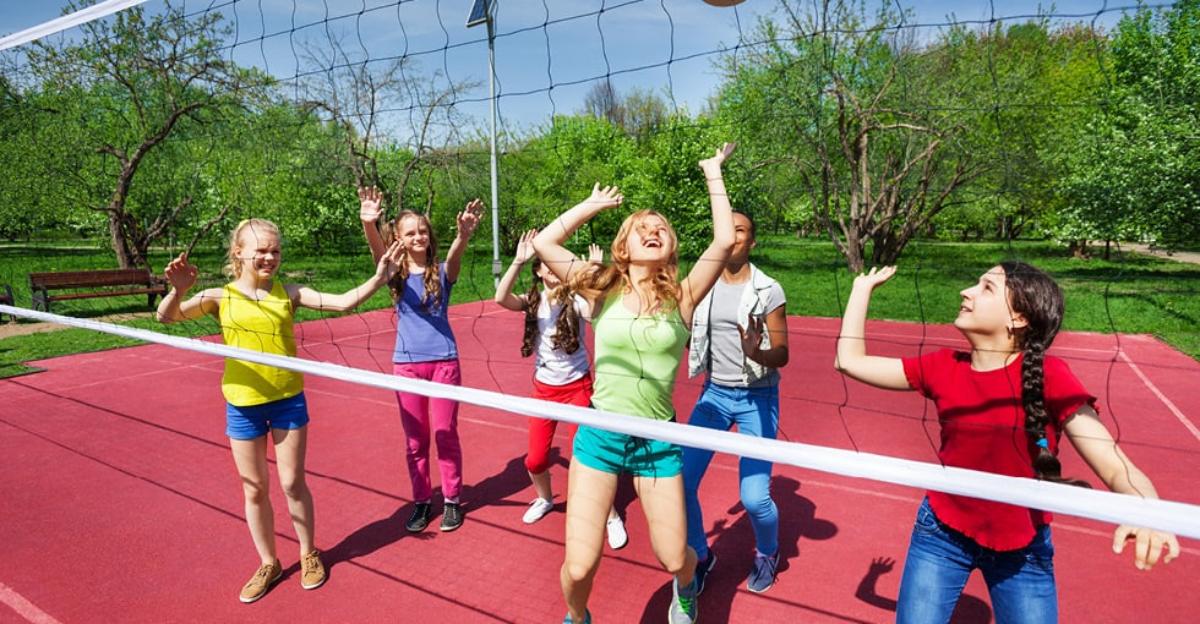Participation in sports for kids leads to long-term life benefits like higher goal achievement, improved self-esteem, lower rates of stress and depression, and fewer behavioral problems. For girls, though, those perks are harder to come by. By the time girls are 14 years old they are dropping out of sports at a rate four times higher than boys.
Sports are clearly valuable to young women as they grow up, but somewhere along the way, sports drop off the priority list. So how can adults foster excitement around sports participation that lasts beyond middle school?
1. Increase Equity
The Women’s Sports Foundation reports that girls possess 1.3 million less opportunities to participate in high school sports than boys. It’s important for educators to give girls the same amount of time for physical activities – from recess to sports practices – as boys. Have them practice in the same facilities and on the same fields. Spend just as much money on new uniforms and equipment for the girls as is spent for young men when it comes to sports. Give girls equal space, time, funding, and resources – because they deserve it for their athletic pursuits.
2. Let Kids Act Like Kids
It’s easy for parents and coaches to get wrapped up in the outcomes of kids’ sports. It makes sense – after all, both are invested in their kids, and they attend just as many practices and games as their sports-playing children. When winning becomes the only thing that matters to the adults at the practices and games, kids tend to lose their passion and drive. This is true for both boys and girls. If parents and coaches truly want to see kids find their own love for the sports they play, they need to ease up on the pressure, and empower kids to practice, play, and win – or lose – like kids.
3. Prioritize Fitness
Unhealthy body image is a longstanding issue for young women. Research shows that self-esteem for young women peaks at the age of nine, and more than 90% of young women ages 15 to 17 want to change something about their physical appearance. Sports help girls develop a healthy idea of what it means to live an active lifestyle that focuses less on looks and more on strength. Research has found that female athletes in high school retain a more positive body image than their non-athlete peers. As girls start to pursue less active interests, encourage them to stay involved in sports and fitness. Get outside and go for runs with them. Show them, in leading by example, that it takes habit development and consistency to stay fit and active. Let girls know that active pursuits last a lifetime and aren’t something you outgrow.
4. Keep Showing Up
This is an important note for parents, educators, and other supportive adults a child’s life – don’t stop attending practices or games when girls get old enough to participate without you there, or even when they ask you to stop coming. Let them know that their sports participation still matters to you, and has a spot in your schedule. Make a big deal when her team advances, or she makes the game-winning shot. She may not ever thank you for showing up and cheering her on, but she notices; and she won’t stay interested in sports for very long if you are no longer sitting in the stands.
Encouraging young women to keep playing sports takes a conscious effort on the part of parents, coaches, and teachers. By setting an active example, empowering them to participate, and making sports participation a priority on your own schedule, girls will have a better shot at staying involved in the sports they love well into their teenage years – and maybe even beyond.






Leave a Reply